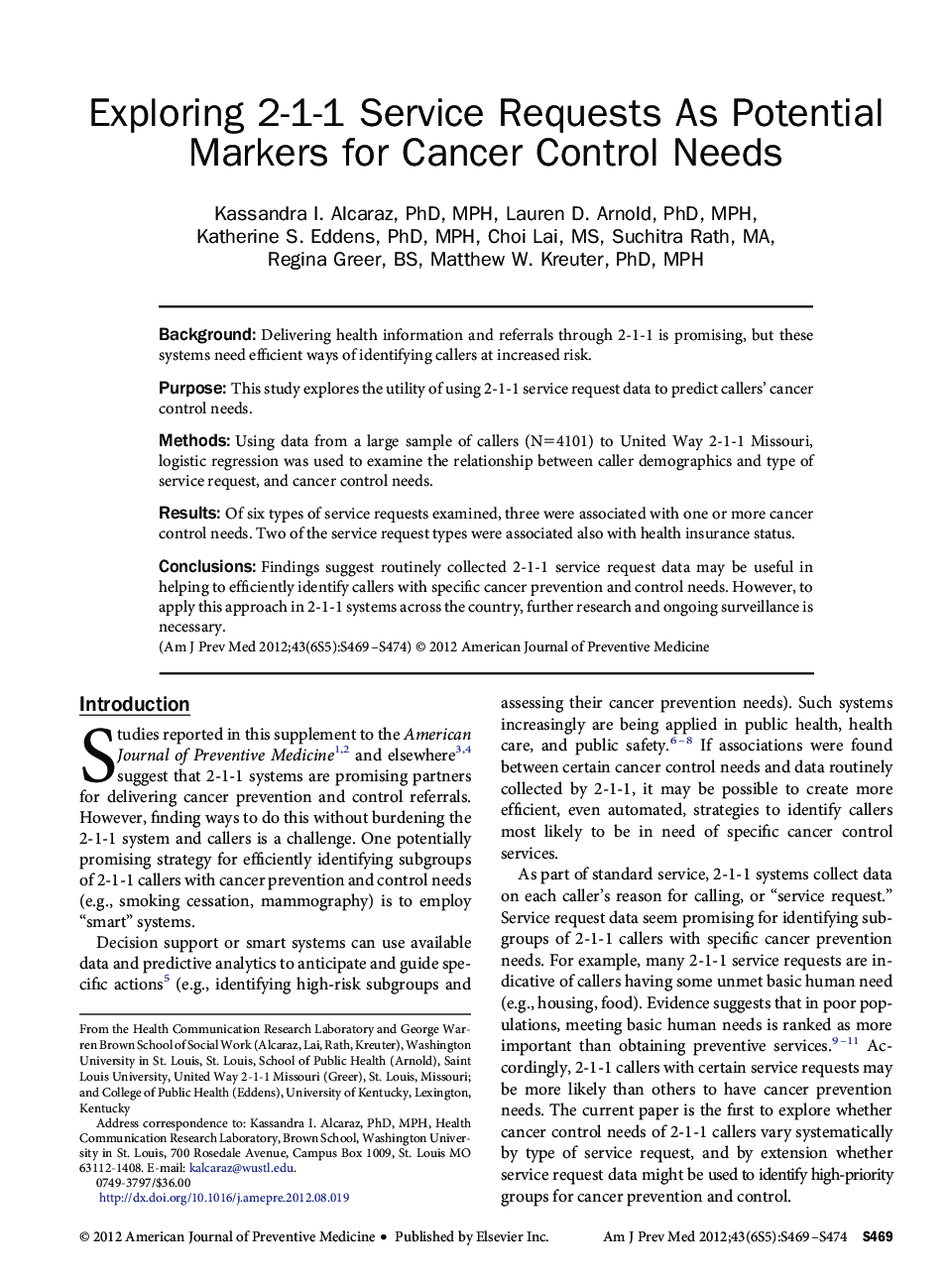| Article ID | Journal | Published Year | Pages | File Type |
|---|---|---|---|---|
| 4192826 | American Journal of Preventive Medicine | 2012 | 6 Pages |
BackgroundDelivering health information and referrals through 2-1-1 is promising, but these systems need efficient ways of identifying callers at increased risk.PurposeThis study explores the utility of using 2-1-1 service request data to predict callers' cancer control needs.MethodsUsing data from a large sample of callers (N=4101) to United Way 2-1-1 Missouri, logistic regression was used to examine the relationship between caller demographics and type of service request, and cancer control needs.ResultsOf six types of service requests examined, three were associated with one or more cancer control needs. Two of the service request types were associated also with health insurance status.ConclusionsFindings suggest routinely collected 2-1-1 service request data may be useful in helping to efficiently identify callers with specific cancer prevention and control needs. However, to apply this approach in 2-1-1 systems across the country, further research and ongoing surveillance is necessary.
